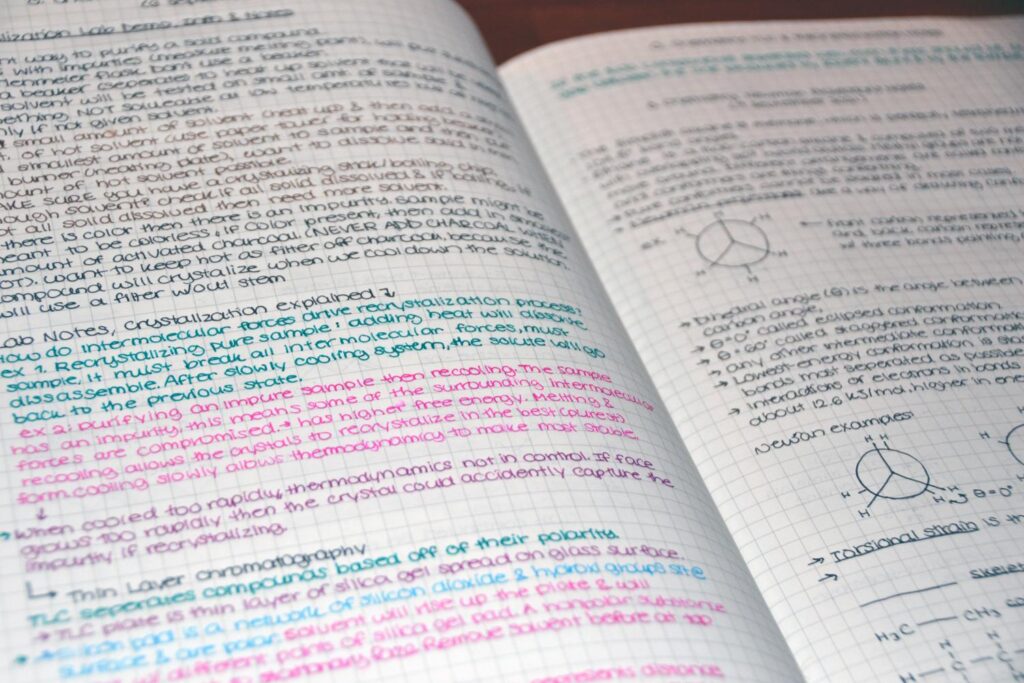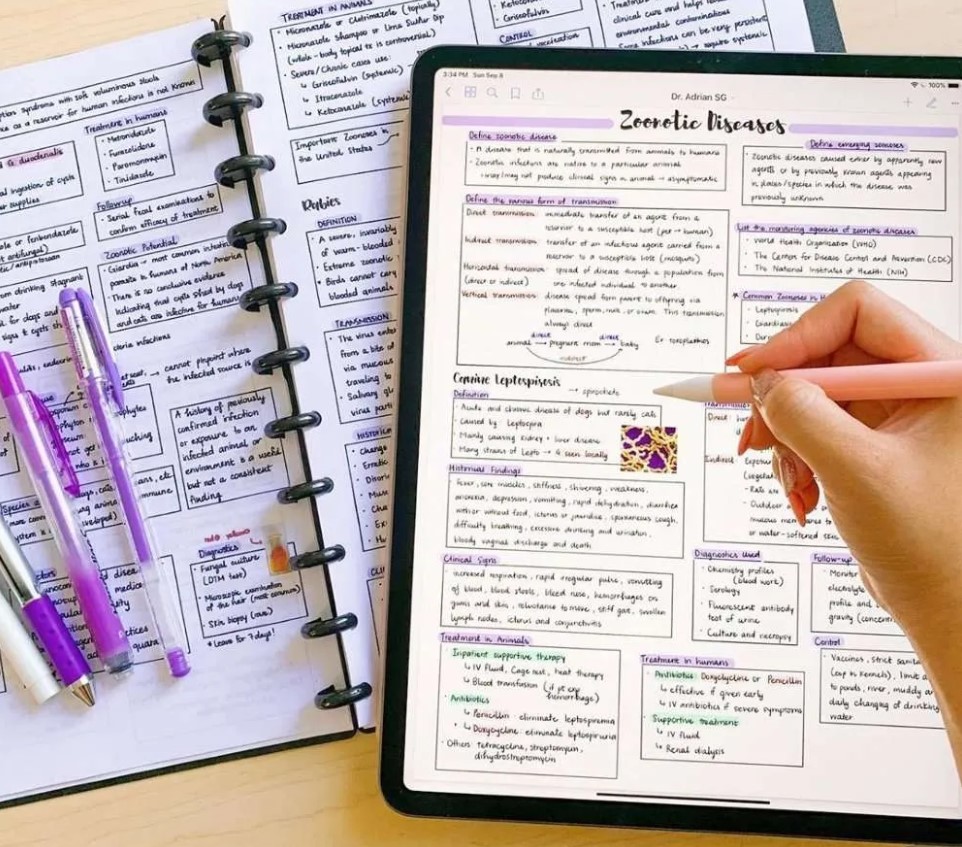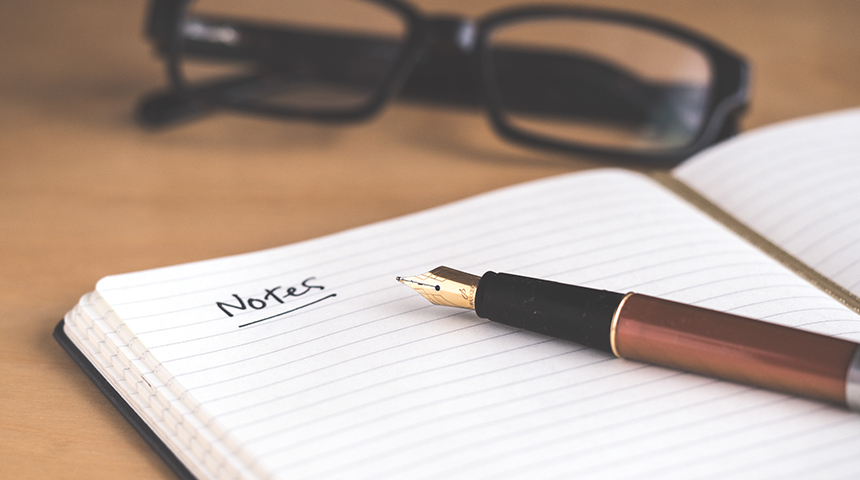Notes constitute a potent asset within a student’s toolkit, yet they remain underutilized and underappreciated. Furthermore, many individuals who do take notes frequently fail to do so effectively. In this blog, we will delve into the significance of notes, explore proper note-taking methods, highlight best practices, and offer strategies for optimizing this invaluable resource. (Featured image reference: https://www.murdoch.edu.au/news/articles/the-art-of-note-taking-what-s-really-most-effective)
What is Note-Taking?
- Notes are a condensed form of study material created by you.
- It is a useful record of key information, from multiple sources and the sources of that information.
- The process of Note-Taking typically commences in the classroom as your instructor delivers their lecture.
- It’s important to note that Note-Taking is not about creating verbatim transcripts of the entire lecture or study material.
- Instead, it involves a skillful process of condensing and rephrasing of important information to enhance your understanding.
- This condensing and rephrasing is done after class hours
- You will need to have notes for each subject in your
Note-taking is an active process that will help you concentrate during the class session and will aid you in retaining what you are learning.
Importance of Note-Taking in Academics
As students, our curiosity often leads us to question “Why” even before we seek answers to “How.” You might be wondering why you should take notes instead of reading directly from the textbook. Here are some compelling reasons.
Repository of Valuable Information
- Notes consolidate information from various sources, and merely not data found solely in a textbook.
- They encompass valuable insights shared by professors that might not be present in the textbook.
- Additionally, notes incorporate content from numerous authors and textbooks, effectively functioning as a comprehensive repository that offers valuable insights and key pointers to a topic.
Note-Taking help with Effective Recall
- While you may have paid full attention during class, the challenge arises when you attempt to recall these learnings while preparing for exams, especially the day before.
- For effective recall, you need to do multiple intermediate revisions before the exams.
- However, revising directly from the textbook every time can be time-consuming and constrain your ability to cover all subjects adequately.
- This is where notes come to your rescue. They are concise and easily accessible, enabling quick revision of lessons.
Supports Active Learning
- Active learning is a fundamental requirement in your academic journey, particularly in higher education.
- Building upon foundational knowledge is common in subsequent semesters, and you may need to recall concepts from previous semesters.
- Similarly, when preparing for competitive exams or career opportunities you need to revise 30 or 40 subjects.
- Such preparation from textbook needs lot of time would be nearly impossible.
- This is where your well-organized notes prove invaluable.
- They are convenient and succinct, allowing you to revise subjects efficiently within a limited timeframe.
Benefits of Note Taking
Notes play an indispensable role in the review and study of class material. They facilitate a deeper comprehension of subjects, aid in retaining information, and enable effective exam preparation. Good note-taking habits offer a wide range of benefits for students and learners of all levels. Here are some key advantages:
- Improved Understanding: Actively taking notes helps you process and understand information as you write it down. This engagement enhances comprehension of complex concepts.
- Retention of Information: Well-structured notes serve as an effective memory aid. Reviewing your notes helps reinforce what you’ve learned, making it easier to remember.
- Organization: Good note-taking habits promote organization. Your notes become a structured repository of key information, making it easy to locate and review important details when needed.
- Effective Study Aid: Notes serve as a valuable study resource. They condense essential material, saving you time and effort during exam preparation and periodic revisions.
- Active Learning: Note-taking keeps you actively engaged in the learning process during lectures or while reading. This active involvement enhances your overall learning experience.
- Customization: You can tailor your notes to your learning style, focusing on what’s most important to you. This personalization makes studying more efficient.
- Clarification: Notes often include your questions or comments, which can be useful for seeking clarification from instructors or peers when something is unclear.
- Enhanced Critical Thinking: While summarizing and condensing information, you engage in critical thinking. This skill is invaluable for analyzing and synthesizing knowledge.
- Repository: They comprise content from a variety of sources, including lectures, books, reference materials, and online resources, all conveniently consolidated in one location.
- Communication: Well-organized notes can facilitate better communication and collaboration when shared with classmates or colleagues.
- Stress Reduction: Having comprehensive notes can reduce stress when approaching exams or assignments, as you have a clear resource to refer to.
- Long-Term Learning: Effective note-taking habits promote long-term retention of knowledge, which is essential for building a strong foundation for future learning.
- Compact: They are portable and convenient to carry, envision the contrast between lugging around 2-3 reference textbooks during your commutes versus carrying just your single, customized set of notes.
In essence, good note-taking habits are a fundamental skill that can significantly enhance your academic and professional success by improving your learning, understanding, and retention of information.
Different Ways of Note-Taking
Handwritten Notes

Image reference: https://www.rubiconline.com/note-taking-promotes-productivity-and-creativity
Handwritten notes involve the process of jotting down information in a notebook using a pen or pencil. Alternatively, you may also find yourself making annotations directly within a textbook, where you underline key concepts or jot down essential points in the margins. This approach tends to work well if you possess legible handwriting and can write swiftly.
Advantages
- Enhanced Concentration: Handwriting notes aids in maintaining focus and attention during lectures or reading sessions. “Many studies show that writing by hand boosts learning in a way that doesn’t happen when you’re typing,” says Jennifer Schweighofer.
- Illustrations and Diagrams: Handwriting allows for the creation of illustrations and diagrams, making it easier to visualize complex concepts.
- Memory and Recall: Research indicates that handwriting your notes can positively impact memory and recall.
Disadvantages
- Limited Editability: Handwritten notes can be challenging to edit, reorganize, or structure, and adding or deleting content is not as straightforward.
- Pace of Writing: Some individuals may struggle to keep pace with the speed of the instructor’s delivery, resulting in incomplete or rushed notes.
- Searchability: Handwritten notes are not easily searchable, which can be problematic when trying to locate specific topics or keywords within a lengthy set of notes, especially during last-minute exam preparations.
Digital Notes

Image reference: https://www.mycism.com/2019/10/tips-on-digital-note-taking-for-post-secondary-students/
Digital notes involve the creation of notes on a laptop, tablet, or any other electronic device. This approach is particularly effective if you are proficient at typing.
Advantages
- Flexible Editing: Digital notes offer the advantage of easy reorganization, content addition, or deletion, facilitating the creation of well-structured content.
- Efficient Searching: Locating specific topics or information is a breeze, taking only seconds, thanks to the search functionality.
- Organizational Tools: The convenience of digital organization through folders and subfolders enables systematic storage and retrieval of notes.
- Software Variety: Various software options are available based on your content type, such as word processors, spreadsheets, powerpoints and more.
- Neatness: Digital notes are ideal for those with less-than-perfect handwriting, as they ensure legibility.
Disadvantages
- Lack of Quick Diagrams: Drawing diagrams or illustrations on a digital device may not be as quick and intuitive as doing so by hand.
Both handwritten and digital note-taking methods have their advantages and disadvantages. The choice ultimately depends on your preferences and needs. Neat and fast writers may prefer handwritten notes, while those requiring frequent revisions or access to well-organized content may find digital notes more suitable.
For those seeking a compromise between the two, a third method might be the solution.
Hybrid Note-Taking: Write First, Type Next
In the age of technology, it’s not uncommon for students to seek a balance between traditional handwritten notes and the convenience of digital note-taking. This hybrid approach combines the strengths of both methods and can offer a unique solution to suit your specific needs. You make handwritten notes during lecture hours. Then you transfer these notes to a word processor. This you can do the same evening or over the weekends.
Advantages
- Flexibility: You can choose the note-taking method that best suits the situation. For example, you might opt for handwritten notes during a lecture but switch to digital notes for organizing and editing later. This transfer of contents from handwritten to digital format also is a kind of review and revision of the topic.
- Enhanced Visuals: Hand-drawn diagrams and sketches can be incorporated into your handwritten notes for a visual understanding of complex topics.
- Quick Retrieval: Digitize your handwritten notes by scanning or taking photos, making it easy to search and access your handwritten content digitally.
- Digital Enhancements: Many digital note-taking apps allow you to annotate PDFs and documents, making it possible to combine your handwritten notes with digital materials. It also allows you to insert additional information or resources to enrich your notes further.
- Backup and Security: By creating digital copies of your handwritten notes, you ensure their safety and accessibility in case of loss or damage to the physical copies.
Find your Ideal Note-Taking Method
The debate between handwritten and digital note-taking methods need not be a divisive one. Instead, consider adopting a hybrid approach that combines the strengths of both methods to optimize your learning experience. By selecting the method that best suits each stage of your learning journey, you can create a powerful and personalized note-taking system that enhances your comprehension, retention, and overall academic success.
Conclusion
Effective note-taking is a skill that can truly transform your academic journey. By implementing the strategies and techniques we’ve explored in this blog, you can harness the power of notes to enhance your learning, comprehension, and retention of essential information. Remember that note-taking is not a one-size-fits-all approach; it’s a personal journey where you can tailor your methods to suit your unique learning style.
Whether you choose handwritten or digital notes, or even a hybrid approach, the key is to actively engage with the material, organize your thoughts, and create a valuable resource that will aid you in your studies. Consistency is key, so make note-taking a habit, and you’ll find that it becomes an invaluable tool for academic success.
Hope you found this blog useful. Do share my blogs with your friends, peers and fellow investors.

